Mountaineer Field (1924-1987)
Introduction
Text-to-speech Audio
Images
Plaque marking the location of Mountaineer Field
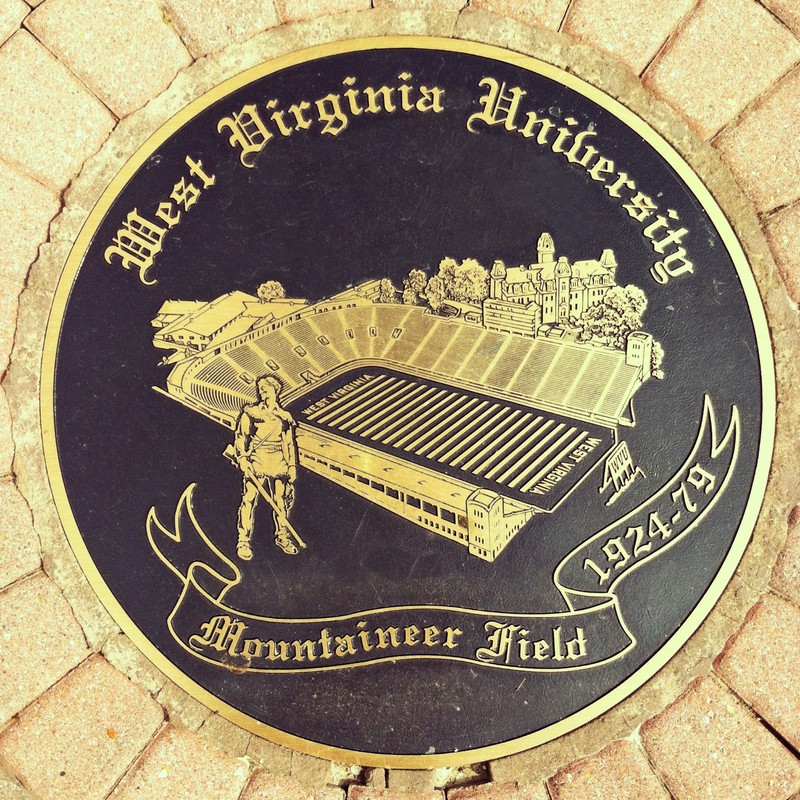
Workers and horses excavate Mountaineer Field, ca. 1924.
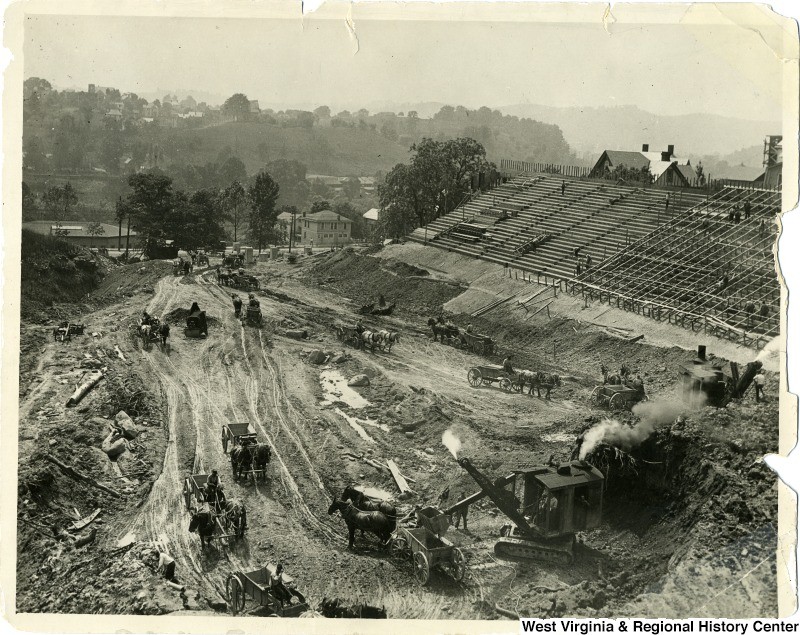
Photo circa 1924-1930.
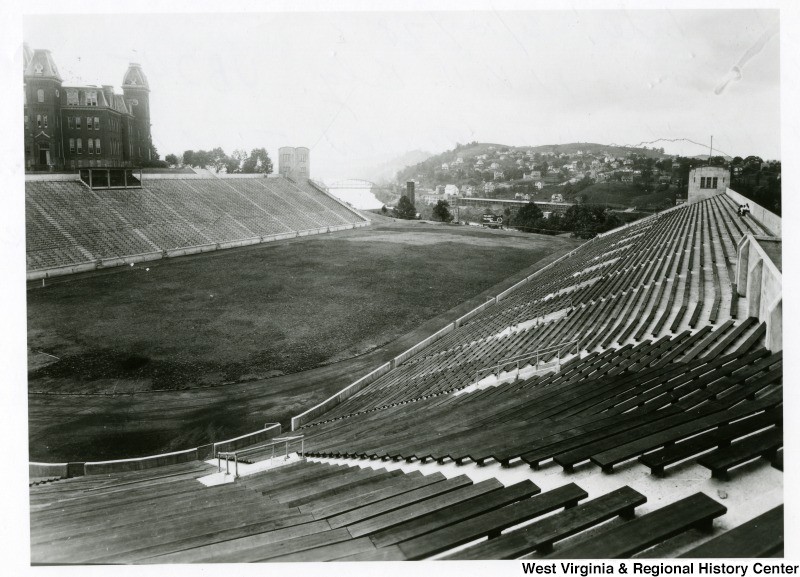
Mountaineer Field was situated between Woodburn Hall, the most iconic building at WVU, and the Sunnyside neighborhood.
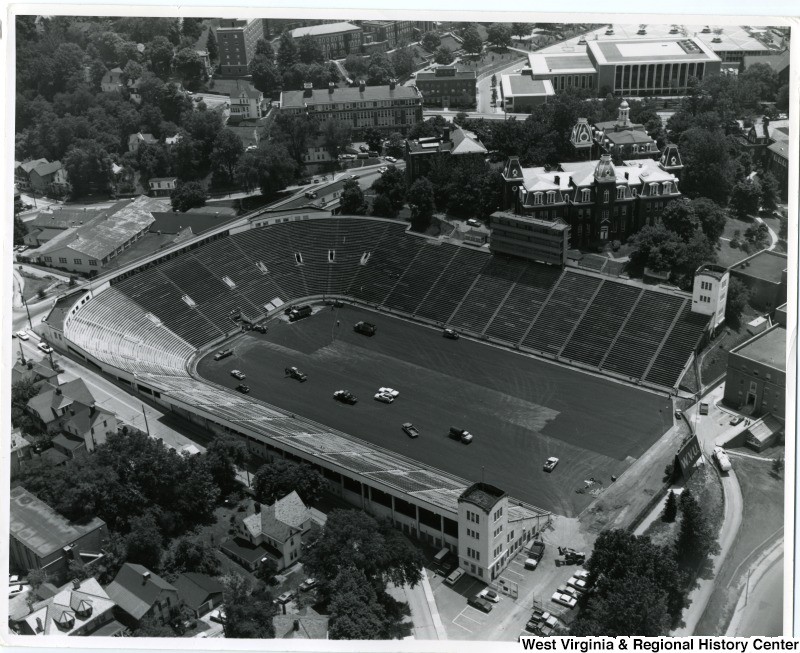
Fans lined up at Mountaineer Field's main entrance, ca. 1956.
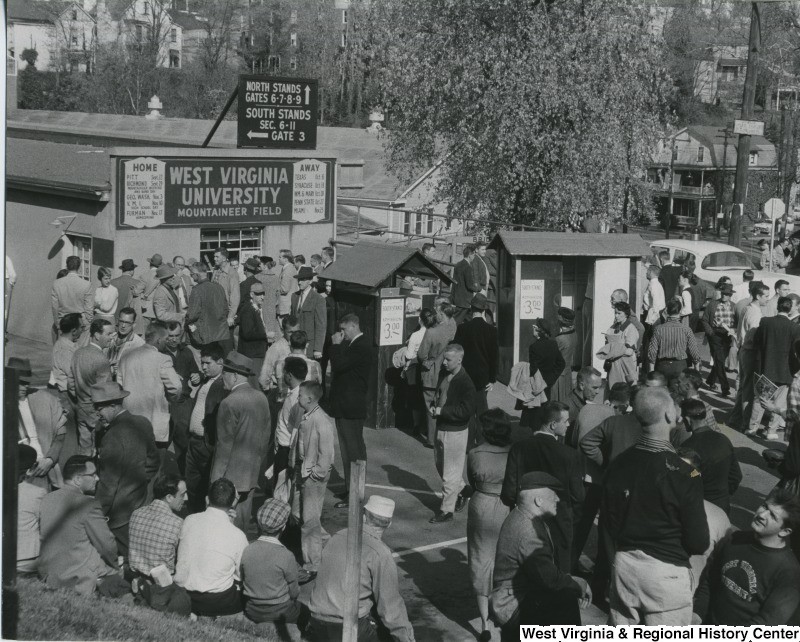
Mountaineer Cheerleaders bring the team onto the field, ca. 1968.
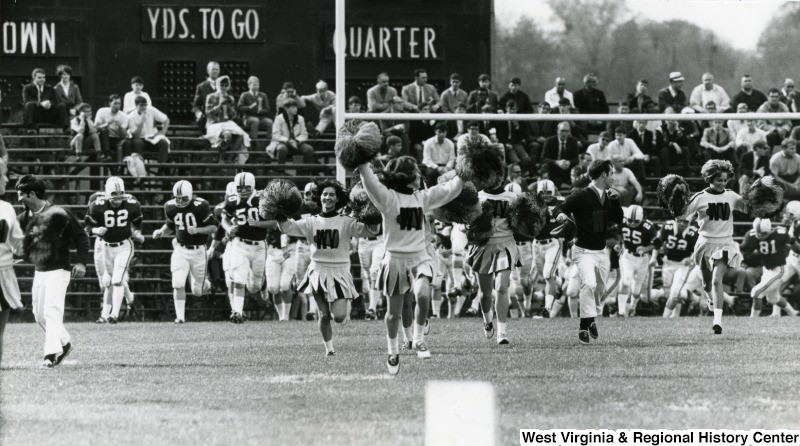
Mountaineers after practice in 1955, amid a successful decade for WVU football.
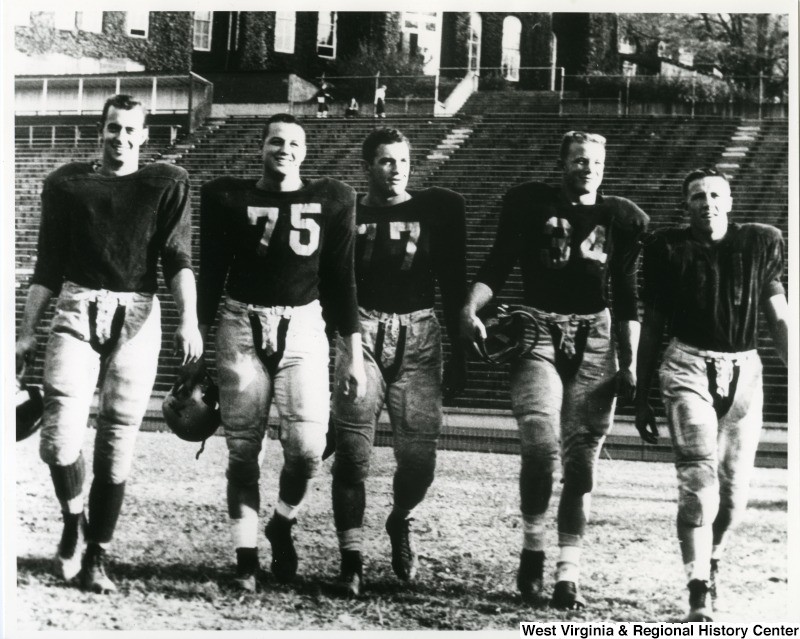
The Pride of West Virginia marches onto the field, ca. 1960-75.
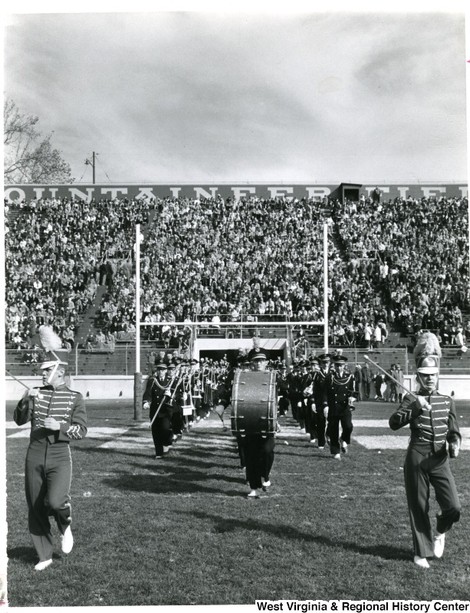
Physical education students practice golf on Mountaineer Field, ca. 1965-71.
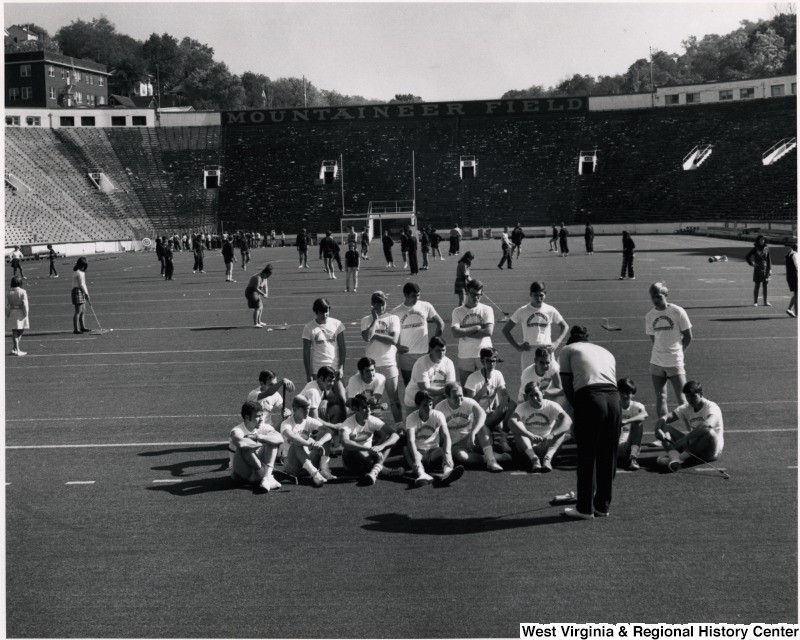
The ROTC often held practice and formal events at Mountaineer Field.
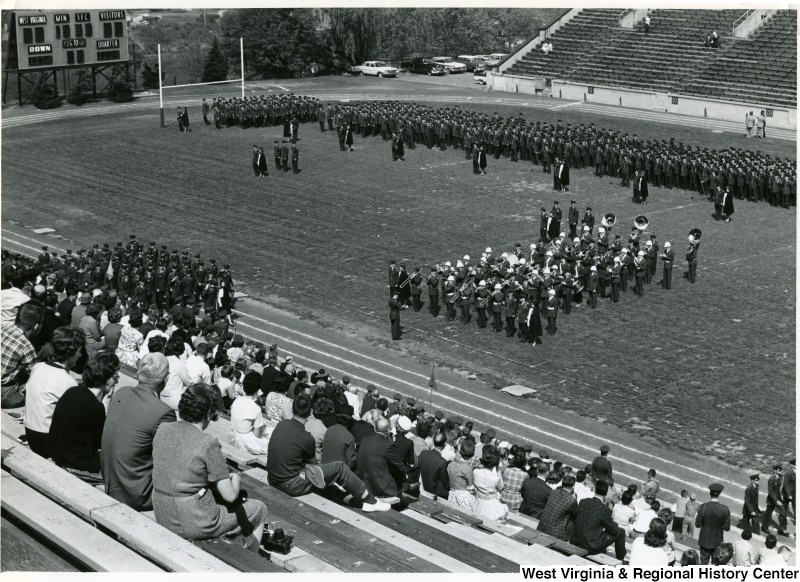
Schoolchildren at an event on Mountaineer Field, ca. 1926.
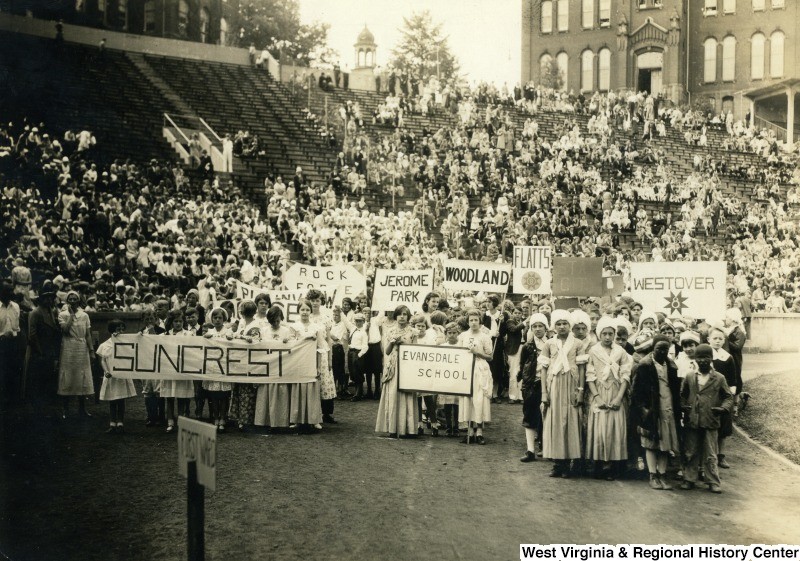
General Dwight Eisenhower addresses graduates at commencement, 1947.
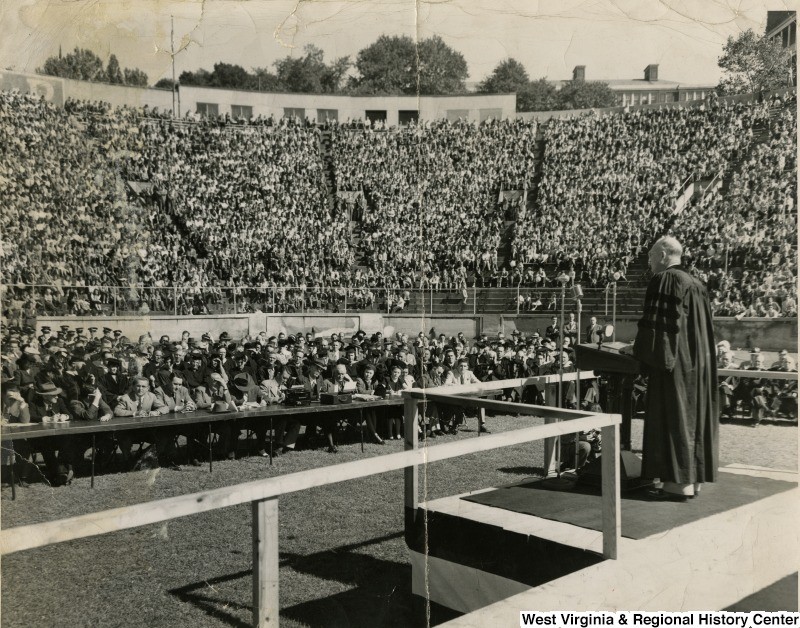
View of the field and Monongahela River from the press box, ca. 1965-71.
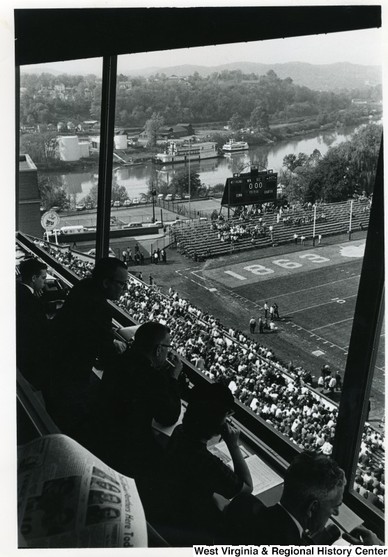
The Mountaineer, WVU's mascot, stands in the abandoned Mountaineer Field in 1987.

Backstory and Context
Text-to-speech Audio
Mountaineer Field was constructed in 1924, amid the "golden age of American sports." By the twentieth century, sports had transformed from informal games to structured physical activities bound by codified rules. While other states with large cities developed major leagues, West Virginia organized sports thrived on the local level, springing up from coal company towns and railroads.1 West Virginia University's teams, however, provided what sports historian Bob Barnett calls a "unifying symbol” for sports fans across the state.2
West Virginia University wanted to enter the "golden age of American sports" with a stadium of its own. The Mountaineers originally practiced at what was nicknamed "Splinter Stadium," due to its cheap wooden bleachers; this stadium was located at the current MountainLair parking lot site and sat 10,000 spectators.3 In the 1920s, athletic director, Harry Stansbury, acquired funds for Mountaineer Field, along with a Field House for basketball. The University built a horseshoe-shaped stadium seating 34,000, twice as large as the Morgantown population at the time.4
The first game held on the Mountaineers' permanent home turf was on September 27, 1924, against Stansbury's alma mater, Wesleyan College. Mountaineer Field was formally dedicated on November 14, 1925 with a parade through Morgantown, a ceremony with the governor, Howard Gore, and a game against the Penn State Nittany Lions. It was at this game that the Mountaineers solidified one of its biggest rivalries. Beginning in the 1930s, Mountaineer Field was also the battle ground for the Backyard Brawl, a rivalry with the University of Pittsburgh Panthers that dates back to the 1890s. By the 1950s, the Mountaineers rose out of national obscurity with Coach Art "Pappy" Lewis leading the team to win five Southern Conference championships and rank seventh in the nation.5
While Mountaineer Field hosted countless football games, it was also an important space for physical education classes, ROTC practice, commencement ceremonies, and special public events. Mountaineer Field's "football weekends" drew thousands into Morgantown and stimulated the development of hotels, bars, restaurants, and shops, particularly in Sunnyside, a neighborhood bordering Mountaineer Field.
As the twentieth century progressed, West Virginia University began to outgrow Mountaineer Field. Student enrollment spiked after World War II. More female students and African American students could take advantage of athletic programs because of racial integration in the 1950s and Title IX in the 1970s. Furthermore, the state of West Virginia declined as college athletics nationally grew more professional and commercialized. An upgraded stadium could better reflect the success of the University football team and bolster state image and morale.6
Because of its location in downtown Morgantown, Mountaineer Field could not be renovated to accommodate more spectators and larger facilities. Despite controversy, a new stadium would be built on a University golf course on the Evansdale campus. The Mountaineers played their last game at Mountaineer Field in November 1979, against the Pitt Panthers. They lost the game and ended an era.7
Though closed, students in the 1980s played informal sports, practiced for the Marching Band, and sunbathed at the dilapidating Mountaineer Field. The property was finally razed in 1987 and football games have been played at the new Mountaineer Field, now Milan Puskar Stadium, ever since.8
Sources
1. Barnett, Hillside Fields, xvi-xvii.
2. Barnett, Hillside Fields, xv.
3. Trish Prospero, "Old Mountaineer Field: a monument from the past," The Daily Athenaeum, May 31, 1984, 14.
4. Barnett, Hillside Fields, 71.
5. Barnett, Hillside Fields, 71, 80-81, 171-174, 316-320; Doherty and Summers, West Virginia University, 119-121, 328; Lewis, Aspiring to Greatness, 126-127.
6. Barnett, Hillside Fields, xxi-xxii; Doherty and Summers, West Virginia University, 329-331; Lewis, Aspiring to Greatness, 498-502.
7. Lewis, Aspiring to Greatness, 324-327; Toni Locy, “Campus security ‘beefed up’ for last home game at stadium,” The Daily Athenaeum, November 8, 1979, 1.
8. Shannon Smith, "Valid entry," The Daily Athenaeum, October 17, 1984, 4;
Barnett, Bob. Hillside Fields: A History of Sports in West Virginia. Morgantown: West Virginia University Press, 2013.
Doherty, William T., Jr., and Festus P. Summers. West Virginia University: Symbol of Unity in a Sectionalized State. Morgantown: West Virginia University Press, 1982.
Lewis, Ronald L. Aspiring to Greatness: West Virginia University Since World War II. Morgantown: West Virginia University Press, 2013.
The Daily Athenaeum, 1979-1985.
West Virginia and Regional History Center, WVU Libraries.
West Virginia and Regional History Center, WVU Libraries.
West Virginia and Regional History Center, WVU Libraries.
West Virginia and Regional History Center, WVU Libraries.
West Virginia and Regional History Center, WVU Libraries.
West Virginia and Regional History Center, WVU Libraries.
West Virginia and Regional History Center, WVU Libraries.
West Virginia and Regional History Center, WVU Libraries.
West Virginia and Regional History Center, WVU Libraries.
West Virginia and Regional History Center, WVU Libraries.
West Virginia and Regional History Center, WVU Libraries.
West Virginia and Regional History Center, WVU Libraries.
West Virginia and Regional History Center, WVU Libraries.
